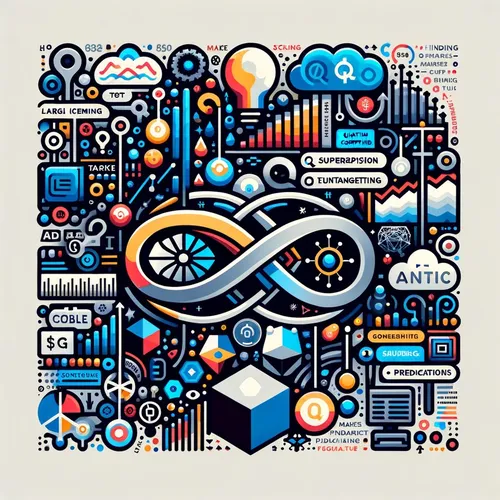Quantum Grids: IonQ and ORNL Untangle Energy Optimization
- Author
- Quiet. Please
- Published
- Sun 10 Aug 2025
- Episode Link
- https://www.spreaker.com/episode/quantum-grids-ionq-and-ornl-untangle-energy-optimization--67320785
This is your Quantum Market Watch podcast.
This week, headlines crackled with the news that IonQ and Oak Ridge National Laboratory have accomplished something dazzling: applying quantum computing to optimize power grids, an industry use case announced just days ago. I’m Leo—Learning Enhanced Operator—and today on Quantum Market Watch, the hum of superconducting circuits and the murmur of trapped ions are more than background noise. They’re shaping the future of energy itself.
Picture this: the grid, vast and unruly, with generators pulsing and data swirling like charged particles. IonQ’s Forte processor, 36 qubits strong, teamed up with ORNL to solve the “unit commitment” problem—the daunting task of scheduling 26 power generators across 24 time periods. Classical algorithms stumble on this; the computational landscape grows exponentially, like a quantum superposition of possibilities. But using a hybrid quantum-classical algorithm, they found the optimal schedule—something practically impossible until now.
In my own lab, when calibrating superconducting devices, there’s a moment when the echo of entangled electrons skitters through chilled metal. It’s a sensory rush—cold vapor billows, wires shimmer, and the potential futures of computation unfold. This week, as I watched IonQ’s team announce their demo, I felt that same sense of drama. Like Schrödinger, who imagined a cat suspended between life and death, power grid managers now see their plans suspended between failure and quantum solution—waiting for the next measurement to reveal a decisive path.
This matters because energy grids are the backbone of civilization. Quantum optimization means smarter energy use, lower emissions, and resilience against blackouts. As IonQ’s CEO Niccolo de Masi said, this is just the beginning. The leap from 36 to thousands—millions—of qubits is coming, and each advance could mean grids that adapt in real time, integrate renewables seamlessly, and save billions in costs. I picture a future where grid operators rely not only on weather models and human intuition, but on quantum-enhanced decisions that ripple across continents.
This use case isn’t isolated. Fujitsu just began work on a 10,000+ qubit superconducting quantum computer in Japan, with promises of fault-tolerant architectures. Meanwhile, to commercialize quantum further, Hamamatsu Photonics is crafting ultra-fast, ultra-sensitive cameras specifically for quantum systems. The pace is feverish. Today’s tech is the roadmap for the entire sector—industrializing quantum computers means the digital nervous system of our world will be powered by algorithms running on superposition and entanglement.
The grid optimization breakthrough is a metaphor for quantum itself: untangling complexity, finding clarity in a tangle of possibilities. As quantum computing moves from theory to application, industries beyond energy—finance, logistics, pharmaceuticals—feel the tug of quantum disruption. What’s uncertain today may crystallize into new modes of productivity tomorrow.
Thank you for listening. If you ever have questions or want a topic discussed on air, send me an email at [email protected]. Don’t forget to subscribe to Quantum Market Watch. This has been a Quiet Please Production. For more information, check out quietplease.ai.
For more http://www.quietplease.ai
Get the best deals https://amzn.to/3ODvOta
